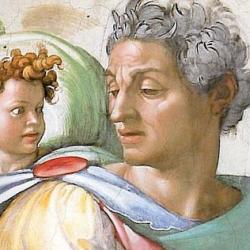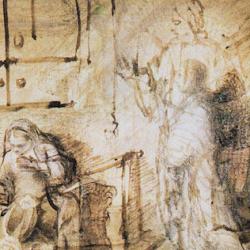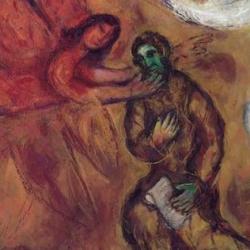Isaiah 25 has a number of connections with the events of the exodus and the Sinai covenant. The Psalm that opens the chapter resonates with the Song of Moses in Exodus 15, as does the song of salvation in verse 9. The feast on the mountain is a sacrificial feast on Mount Zion, but also resembles the covenant-making feast of Exodus 24, when Aaron and his sons joined the elders halfway up the mountain to eat and drink (cf. “elders” in Isaiah 24:23).
When the elders ascend the mountain, a “covering” separates them from God, but Isaiah envisions a time when Yahweh Himself will consume the covering. The word for “veil” in 25:7 is massekah , which normally means “molten image,” from a verb that means “pour out” (the verb nasak , “pour out,” is also used in verse 7). It is, to be specific, the word used for the molten calf that Israel made at Sinai. This “covering” or idolatry meant death for Israel, but Isaiah sees a time and a mountain where “all peoples” will gather without idolatrous mediation or separation, because Yahweh Himself has swallowed the molten thing into Himself, because Yahweh Himself has swallowed down the firmament that separates Him from His people.
This may also refer to Israel’s drinking of the dust from the destroyed calf. Moses forced Israel to drink down the water with the molten calf as a jealousy test. But someday Yahweh Himself will swallow the molten thing whole, and prove Himself faithful.










